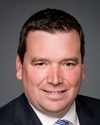Thank you very much, Mr. Chair.
I would also like to thank the committee members for inviting us. With me today is my Deputy Minister, Serge Dupont.
I must say, it is remarkable how quickly time passes. It has been almost a full year since I have testified before this committee. Today, I have the honour of presenting the Supplementary Estimates 'C' to the Committee, and I am looking forward to responding to any questions hon. members may have regarding the Estimates.
If I may anticipate some of those questions, I am sure the Committee has noted the proposed additional funding for Atomic Energy of Canada Limited. The Committee will also be interested in the ongoing restructuring of AECL. With the Committee's permission, I will devote my opening statement to that subject, and to our Government's objectives and initiatives for AECL and the nuclear industry at large.
There is no question but that the nuclear renaissance that provided so much optimism in recent years has been slower to ramp up than expected. At the same time, there are opportunities for refurbishment and new-build projects, projects that will generate non-emitting baseload power for decades in Canada and around the world. As a government, we want to ensure that Canada's nuclear industry has the capacity to respond to these opportunities, but we are also cognizant of our responsibility to Canadian taxpayers.
Our decision to launch the restructuring of AECL in 2009 will achieve these goals. This decision was not taken lightly. It was made only after the completion of two separate and independent analyses and based on clear, sound policy objectives. The results of the analyses were clear: only market-driven investment in the commercial activities of AECL, that is, CANDU Inc., could create a stronger platform for growth while protecting taxpayers from the inherent risks of the nuclear market. Restructuring was and is the correct choice.
Our approach was endorsed last week by Luis Echavarri, the director general of the OECD Nuclear Energy Agency.
He told an audience at the Canadian Nuclear Association Annual Conference that when it comes to the nuclear industry, it's important to separate the public responsibility for establishing a framework from the responsibility of private investors, and that restructuring AECL will take us in the right direction.
This is a complex process and it has taken longer than expected. AECL has incurred setbacks along the way. The delays and cost overruns at Point Lepreau, Bruce, and Wolsong are well known. They have affected CANDU Inc. and drawn more money from taxpayers.
In supplementary estimates (C), the government is proposing additional funding for AECL. I will not mince words: I am not happy with this. But it is a matter of responsibility, not choice. The Government of Canada will honour these fixed-price contracts and other AECL responsibilities. We are working with AECL to ensure that it draws no more of the funding than necessary while meeting all its obligations, including maintaining the highest standards of safety, security, and environmental responsibility.
I understand that AECL officials are here to discuss their efforts in this regard. Nonetheless, this and previous requests for funds make clear that to maintain and create jobs AECL must be restructured and subjected to greater market discipline.
Looking forward, we cannot expose taxpayers to such risks. AECL has not and will not take on new contracts with material financial risk during the restructuring process.
Unfortunately, any restructuring leads to a period of uncertainty. The Government appreciates the impacts of this uncertainty on AECL, its workers and unions, its suppliers, and the nuclear industry in general. We are moving toward certainty, for taxpayers and for the industry. Today, the Bruce, Wolsong and Lepreau projects are performing well within their re- based timelines.
In particular, the independent advisors I appointed say we now have realistic timelines for Point Lepreau. We look forward to a constructive outcome for the Gentilly 2 refurbishment.
There are opportunities. Ontario has signalled a commitment for two new reactors at Darlington. Just last week, at the Canadian Nuclear Association Conference, Tom Mitchell, president and CEO of Ontario Power Generation, said that new nuclear is on the verge of becoming a reality in Ontario. He added that OPG sees the merit in continuing to use CANDU technology, in particular building enhanced CANDUs at the Darlington site.
AECL is assisting refurbishment opportunities in Ontario and in Argentina as well. The company has strong relationships with Romania, Jordan, China, and India.
In other words, the prospects for CANDU Inc. are encouraging, and I am pleased to say that our team is engaged in confidential negotiations with committed investors. While such negotiations are always difficult and success is never guaranteed, both sides are very mindful that time is of the essence.
I will conclude by assuring honourable members that our government remains committed to Canada's nuclear sector. Our government's record of support and engagement is clear.
Just a few weeks ago, I announced a key project for the removal of low-level radioactive waste, as part of our ongoing implementation of the Port Hope area initiative.
We made the investments needed to ensure the safe repair and return-to-service of the NRU. We support AECL's plan to re-license the reactor through 2016. In January, I announced funding of four major projects to develop the potential of cyclotrons and accelerators to produce medical isotopes.
Internationally, we have led an unprecedented effort to co-ordinate the global isotope supply chain; signed a nuclear cooperation agreement with India; and joined President Obama's non-proliferation efforts. We are actively studying options for the future mandate and management of the AECL's Nuclear Labs.
These are all major initiatives, and a clear demonstration of our confidence in the people and the future of Canada's nuclear industry.
Thank you and I look forward to your questions.




